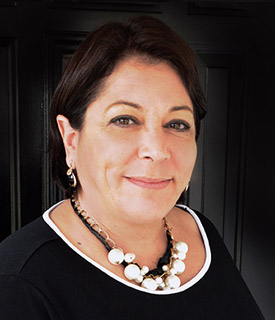Treatment for obsessive-compulsive disorder (OCD) has improved significantly over the past several decades. Not only do mental health professionals now have a deeper understanding of OCD than in previous generations, but mental health providers also now have access to and can offer treatment for obsessive compulsive disorder (OCD) that’s more effective than treatments available in the past.
For people with OCD and their families, this is good news.
During informal conversation, most of us are guilty of using the word obsessive or the phrase OCD to talk about something we’re either very interested in or in reference to a specific habit or preference we have. However, being very interested in something or preferring something a certain way is far different than clinical obsessive-compulsive disorder
The experts at the International Obsessive-Compulsive Disorder Foundation (IOCDF) define OCD as follows:
“…a mental health disorder that affects people of all ages and walks of life, and occurs when a person gets caught in a cycle of obsessions and compulsions. Obsessions are unwanted, intrusive thoughts, images, or urges that trigger intensely distressing feelings. Compulsions are behaviors an individual engages in to attempt to get rid of obsessions and/or decrease distress.”
In a landmark publication cited by respected mental health experts consistently over the past twenty years, the World Health Organization (WHO) previously identified severe OCD as:
“One of the most disabling illnesses by lost income and decreased quality of life.”
In addition, the WHO indicates the following:
“…anxiety disorders, including OCD, as the sixth largest contributor to non-fatal health loss globally.”
In recent years, mental health professionals have combined two separate approaches for treating OCD – transcranial magnetic stimulation (TMS) and exposure response prevention therapy (ERPT) to support patients with OCD. In most cases, these therapeutic modes are delivered separately, rather than as part of the same treatment plan. However, initial research on combining these two methods to treat disorders such as major depressive disorder (MDD) shows the effectiveness of both approaches increases when administered as part of a multimodal treatment plan.
In this article, we’ll describe both TMS and ERPT treatment for OCD.
First, we’ll review the prevalence of OCD and the potential negative consequences of untreated OCD. Then, we’ll offer quick primers on transcranial magnetic stimulation (TMS) and exposure response prevention therapy (ERPT). We’ll close this article by reiterating the importance of understanding what real OCD is, and the importance of seeking professional, evidence-based support sooner rather than later.
How Many Adults in the U.S. Have OCD?
The most recent data on from the National Institute of Mental Health (NIMH) indicates the following prevalence rates of OCD in the U.S.:
- Total, past 12 months:
- 1.2% (2,500,000)
- Women: 1.8%
- Men: 0.5%
- Total, lifetime diagnosis:
- 2.3% (4,800,000)
- Severity of adult OCD:
- Severe: 51%
- Moderate: 35%
- Mild: 15%
Research on OCD published in 2019 shows offers important facts related to treatment for OCD:
- Age:
- Initial symptoms, average age: ~19
- Symptoms before age 14: 25%
- Initial symptoms before age 12: 33%
- Co-occurring mental health disorders:
- Total, any disorder: 90%
- Mood disorders: 65%
- Impulse/behavioral disorders: 56%
- Alcohol or substance use disorder (AUD/SUD): 40%
- Anxiety disorder: 76%
What we learn when we review that data is that in the U.S. there are over two and a half million people with clinical OCD at any given time. In addition, nine out of ten of those people have a co-occurring mental health disorder. That’s why treatment for OCD is an important specialty in mental health treatment: millions of people need support, and a case of clinical OCD is rarely simple.
Without evidence-based treatment from a qualified mental health provider, obsessive-compulsive disorder is associated with a wide variety of negative outcomes:
- Withdrawal loved ones
- Reduced contact with friends
- Self-isolation
- Difficult with relationships
- Impaired school performance
- Problems at work
- Misuse of drugs or alcohol
- Suicidal behavior/self-harm
As you can see – and pulling no punches – the consequences of untreated OCD can be serious, up to and including suicidality. That’s what makes treatment for OCD important. Which brings us to the topic of this article: the two treatments we mention in the introduction to this article, transcranial magnetic stimulation (TMS) and exposure response prevention therapy (ERPT). Mental health providers have used these two approaches separately in treatment for obsessive-compulsive disorder for several years. However, combining these two approaches shows promise in reducing symptoms in people with OCD.
Treatment for Obsessive-Compulsive Disorder: Transcranial Magnetic Stimulation (TMS) and Exposure Response Prevention Therapy (ERPT)
If you’ve never heard of TMS or ERPT before, here are two quick primers.
About Transcranial Magnetic Stimulation (TMS)
TMS works by emitting electromagnetic pulses to areas of the brain associated with mood, emotion, and the regulation of mood and emotion. These pulses activate specific areas of the brain and decrease symptoms of mental health disorders, including depression and obsessive-compulsive disorder.
TMS therapy is safe and effective, with no systemic side effects. Some patients may experience mild headaches or tingling in the scalp or jaw, which pass quickly and do not prevent full participation in daily activities. To date, studies show no long-term side effects associated with TMS treatment. In most cases, clinicians deliver TMS treatment in an outpatient, office setting. TMS doesn’t require anesthesia or sedation, and lasts about 20-30 minutes per session. Because there’s no sedation or anesthesia involved, patients can drive themselves to and from TMS treatment sessions.
Most patients engage in 20-30 sessions over several weeks. The schedule and exact number of sessions varies by personal need and individual treatment response. Patients report that the positive effects of treatment with TMS for OCD can last for several months.
About Exposure Response Prevention Therapy (ERPT)
During ERPT, therapists and patients collaborate to identify the primary fears and anxieties that drive the obsessions and compulsions associated with OCD, from the most intense to the least intense. Then, in a controlled, progressive, manner, they use this hierarchy of fears/anxieties to allow the therapist to:
- Expose the patient to the trigger for the anxiety/fear
- Teach practical, effective techniques to manage emotional reaction to the trigger
- Teach practical, effective techniques to manage behavioral reactions to the trigger
- In a safe space, they repeat the steps until the trigger no longer causes negative thoughts, emotions, or behaviors
- This process is called habituation, and can lead to the long-term decoupling of external stimuli from distressing internal thoughts, emotions, and patterns of behavior
- When external stimuli no longer lead to distressing emotions, patients report a significant reduction in the symptoms and negative consequences of OCD
While exposure to the thoughts and ideas that trigger obsessive-compulsive behavior might sound counter-intuitive – and perhaps scary to people with OCD – it’s important to understand that decades of evidence show that this approach works. It can be difficult at first, but the outcome – as people with OCD can attest – an increased ability to tolerate and manage typical risks and handle unknowns and uncertainty on a daily basis.
Categories of Obsessive-Compulsive Disorder: Mild, Moderate, and Severe
So far, we’ve discussed the basics of OCD, including the prevalence, consequences of not seeking treatment, and the combination of two therapeutic approaches that may offer symptom relief when other approaches fail.
Now we’ll share details on the symptoms of OCD for two primary reasons:
- To allow people who experience the symptoms below to determine whether they need to seek a professional psychiatric assessment for OCD.
- To show people without OCD the serious and disruptive nature of OCD symptoms
When an individual receives a clinical diagnosis from a licensed, qualified provider, they’ll indicate the severity of the disorder as mild, moderate, or severe, determined by the intensity, frequency, and duration of symptoms
Mild OCD:
- This form of OCD includes disruptive symptoms that may negatively affect productive behavior or typical daily activity, but don’t take up a significant amount of time or cause severe distress. In most cases, people with mild OCD respond well to first-line treatment for OCD.
Moderate OCD:
- This form of OCD includes symptoms that are more disruptive and take up more time each day, compared to the symptom of mild OCD. In many cases, people diagnosed with moderate OCD respond well to first-line treatment for OCD. In most cases, though, treatment of moderate OCD requires more time, more treatment sessions, and a slightly more immersive approach to treatment, compared to treatment for moderate OCD.
Severe OCD:
- This form of OCD includes symptoms that cause significant disruption, and can prevent people from typical daily functioning. In some cases, managing severe OCD symptoms can dominate the whole day, every day. Traditional, first-line therapies may be ineffective for people with severe OCD.
Up to this point, we’ve defined OCD, offered the latest prevalence data, review the most effective treatment for obsessive-compulsive disorder, and discussed the different levels of severity associated with OCD diagnosis. It’s not difficult to understand how these symptoms can be disruptive, scary, and create problems across all life domains. But it’s important to understand that treatment for OCD can work.
The Importance of Effective, Evidence-Based Treatment for Obsessive-Compulsive Disorder
The informal talk around OCD often makes it sound like it’s not a serious mental health diagnosis. People regularly say things like I’m obsessed with this or I must do this and follow up with a phrase like I’m sorta OCD about it.
Real OCD is absolutely not defined by being obsessed with the current hot rock star or feeling compelled to wear the same comfortable t-shirt every day. While those two things may be symptoms that someone with real OCD experiences, it’s essential to understand the difference between interests/habits and obsessions/compulsions: interests and habits are things we choose and can stop engaging in when we choose.
We want people without OCD to understand this:
People with OCD do not choose their obsessions and do not want to engage in their compulsions. They are unwanted, intrusive, disruptive, and can prevent people from engaging in basic daily activities, which can make life very difficult.
For people with OCD, effective treatment can be life changing. It can be the difference between being feeling trapped at home, ruled by compulsion and obsession, and going out every day and experiencing the full range of life experiences that bring us joy and fulfillment. That’s why the combination of TMS and ERPT – which initial research indicates is promising – may make a significant difference in the lives of people diagnosed with clinical obsessive-compulsive disorder (OCD).


 Gianna Melendez
Gianna Melendez Jodie Dahl, CpHT
Jodie Dahl, CpHT